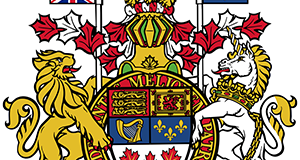Ontario is delivering a new COVID-19 Action Plan for Vulnerable People to better protect vulnerable populations during the outbreak of COVID-19. This plan builds on the government’s previous actions to protect people living in high-risk settings, including homes serving those with developmental disabilities, shelters for survivors of gender-based violence and human trafficking, children’s residential settings, and those residential settings supporting vulnerable Indigenous individuals and families both on and off reserve.
Details of the plan were unveiled today by Premier Doug Ford, Todd Smith, Minister of Children, Community and Social Services, Christine Elliott, Deputy Premier and Minister of Health, and Dr. Merrilee Fullerton, Minister of Long-Term Care.
“The plan we are announcing today will build on and support the critical work that is currently being carried out each and every day by our frontline heroes to care for our most vulnerable citizens,” said Premier Ford. “These people are most at risk during this pandemic and that’s why we are helping these organizations immediately ramp up screening and testing, deploy more protective masks and gloves, and put more boots on the ground in the fight against COVID-19.”
“We have been working in close partnership with the federal government, municipalities, First Nations, Indigenous organizations and bargaining agents as part of the rapid response to COVID-19 in congregate care settings,” said Minister Smith. “The action plan we are delivering today lays out a set of interventions, tailored by sector, to enable prevention and infection control, while maintaining service continuity for the benefit of our vulnerable clients and staff.”
The COVID-19 Action Plan for Vulnerable People focuses on three specific areas:
- Enhanced Screening and Reduced Exposure to Prevent Spread
- Enhancing screening of visitors, staff, and residents on sites, as well as restricting non-essential visitors.
- Providing masks to staff working in congregate care settings and providing training on the use of personal protective equipment in the event of an outbreak.
- Infection Control: Managing Outbreaks and Limiting Spread
- Enhancing testing of symptomatic staff and clients to identify the need for isolation and additional infection control measures on-site.
- Planning to limit staff from working at more than one congregate care setting during an outbreak, specifically in developmental services, intervenor services, violence against women and anti-human trafficking settings.
- Providing additional training and support for high-risk settings dealing with an outbreak, including guidance on how to isolate clients.
- Sustaining Staffing and Managing Staff Shortages
- Working with organizations to promote workforce stability and capacity in high-risk settings.
“Women and children who are in a vulnerable place in their lives must have access to the supports they need and a setting that is safe,” said Jill Dunlop, Associate Minister of Children and Women’s Issues. “We are taking steps to stop the spread of COVID-19, including physical distancing, flexible staffing, and cleaning and disinfecting protocols, to keep people safe where they work and where they live.”
“We know that those who live and work in homeless shelters face unique challenges because of the COVID-19 outbreak,” said Steve Clark, Minister of Municipal Affairs and Housing. “That’s why we’re working closely with service managers and our local partners to collect data and identify specific actions we can take to help.”
The government will work with Indigenous-led congregate care settings both on and off reserve to ensure that these tools and supports are available and adapted to meet their local needs in keeping their clients and staff safe.
“Indigenous leaders across the province have taken swift action to protect their communities from the spread of COVID-19 and today’s enhanced safety measures will provide additional protection for those community members living and working in congregate care settings,” said Greg Rickford, Minister of Energy, Northern Development and Mines and Minister of Indigenous Affairs.
The plan also supports mobilizing action to assessed high-risk locations in managing the COVID-19 outbreak in the days and weeks to come by providing assistance with staffing and additional training and support.
The government is also moving immediately to solicit ideas on additional actions and measures that can be taken now to further support vulnerable Ontarians and staff in high-risk settings.
Did you know?
- Tens of thousands of Ontarians live and work in congregate care settings across more than 4,000 locations.
- The Action Plan builds on current measures implemented by the government to protect vulnerable populations, including visitor restrictions, flexibility for staff hours, expanded access to emergency daycare for frontline workers, and providing alternate settings for care.
- The province has also suspended evictions, provided funds through the province’s $200 million Social Services Relief Fund to Service Managers and invested over $37 million to support outbreak planning, prevention and mitigation efforts to ensure the health and well-being of Indigenous people and communities. Constant monitoring is also underway with local public health organizations.
- The government is expanding the list of eligible expenses under Special Services at Home and for Passport funding. We will also continue to assist families and provide greater clarity about what expenses are eligible under the Ontario Autism program, including Childhood Budgets and Interim one-time funding, for the duration of the COVID-19 outbreak.
- Call your local Ontario Works office if you need to apply for social assistance or apply online.
- School Buses Cancelled: Wawa, White River, Chapleau, & Hornepayne - November 26, 2025
- Ladies Curling Standings – November 24 - November 24, 2025
- Mixed Curling Standings – November 24 - November 24, 2025
 Wawa-news.com You can't hear the 'big picture'!
Wawa-news.com You can't hear the 'big picture'!


